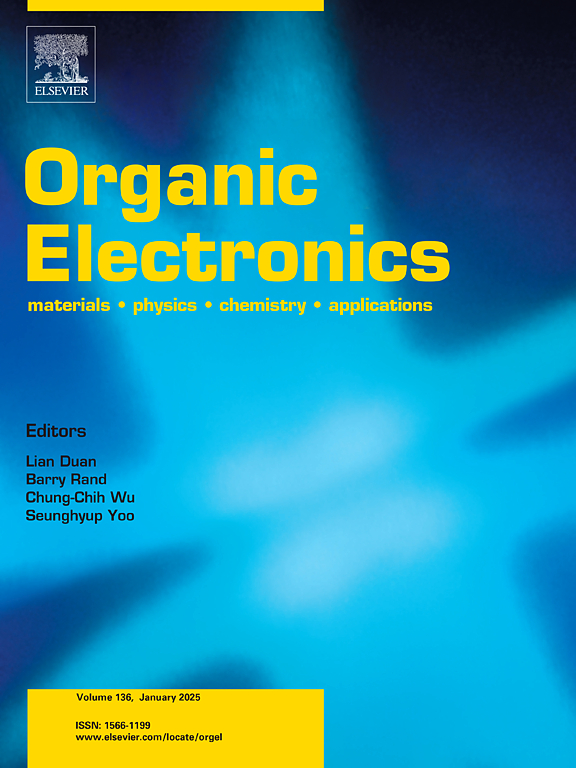Study on the influence of hole transport materials on the response speed of organic photodetectors by time-of-flight technique
IF 2.6
4区 工程技术
Q3 MATERIALS SCIENCE, MULTIDISCIPLINARY
引用次数: 0
Abstract
Organic photodetectors (OPDs) offer some advantages, including flexibility, cost-effectiveness, wavelength tunability, and lightweight, making them compelling alternatives to inorganic photodetectors across numerous applications. However, the low charge carrier mobility of organic semiconductors greatly limits the response speed of OPDs, which remains a significant challenge to further enhance the response speed of these devices to meet the demands of communication and other fields. Previous studies have mainly focused on the efforts to enhance the response speed, but the relationship between response speed and charge carrier transport characteristics has been rarely explored. In this study, we employ the time-of-flight technique to investigate the mobility characteristics of different hole transport layer materials, MCBP and TCTA, and their impact on response speed of the resulting OPDs. The OPD utilizing TCTA as the hole transport layer has achieved a -3dB bandwidth of up to 85 MHz. Compared with MCBP with higher mobility, the stronger transport dispersion of TCTA makes it a more suitable choice for fast-response OPDs, suggesting that the response speed is not solely determined by the mobility of charge carrier transport layer materials.

利用飞行时间技术研究空穴传输材料对有机光电探测器响应速度的影响
有机光电探测器(opd)具有灵活性、成本效益、波长可调性和重量轻等优点,在众多应用中成为无机光电探测器的有力替代品。然而,有机半导体的低载流子迁移率极大地限制了opd的响应速度,进一步提高器件的响应速度以满足通信等领域的需求仍然是一个重大挑战。以往的研究主要集中在提高响应速度上,但很少探讨响应速度与载流子输运特性之间的关系。在这项研究中,我们采用飞行时间技术研究了不同的空穴传输层材料,MCBP和TCTA的迁移特性,以及它们对产生的opd响应速度的影响。利用TCTA作为空穴传输层的OPD实现了高达85 MHz的-3dB带宽。与迁移率较高的MCBP相比,TCTA较强的迁移色散使其更适合用于快速响应opd,这表明响应速度不仅仅取决于电荷载流子迁移层材料的迁移率。
本文章由计算机程序翻译,如有差异,请以英文原文为准。
求助全文
约1分钟内获得全文
求助全文
来源期刊

Organic Electronics
工程技术-材料科学:综合
CiteScore
6.60
自引率
6.20%
发文量
238
审稿时长
44 days
期刊介绍:
Organic Electronics is a journal whose primary interdisciplinary focus is on materials and phenomena related to organic devices such as light emitting diodes, thin film transistors, photovoltaic cells, sensors, memories, etc.
Papers suitable for publication in this journal cover such topics as photoconductive and electronic properties of organic materials, thin film structures and characterization in the context of organic devices, charge and exciton transport, organic electronic and optoelectronic devices.
 求助内容:
求助内容: 应助结果提醒方式:
应助结果提醒方式:


